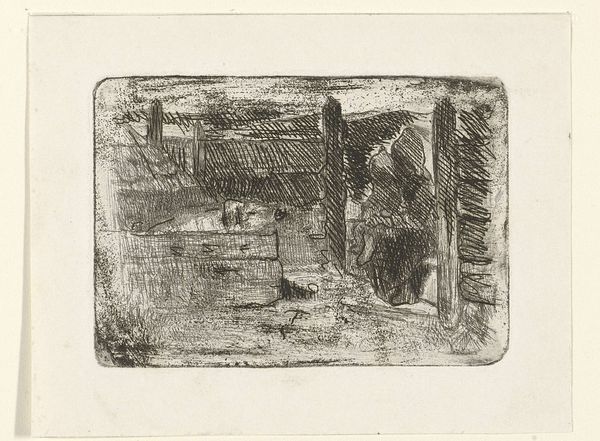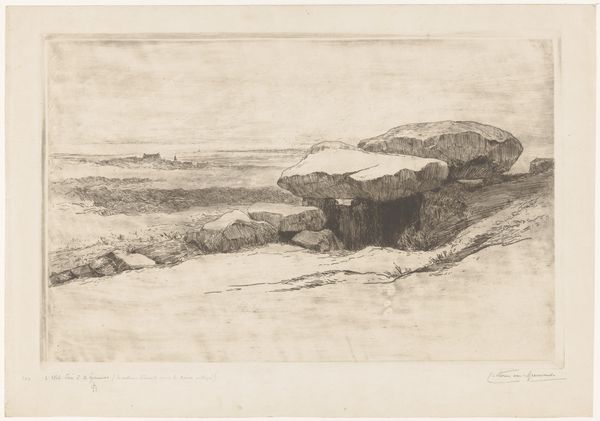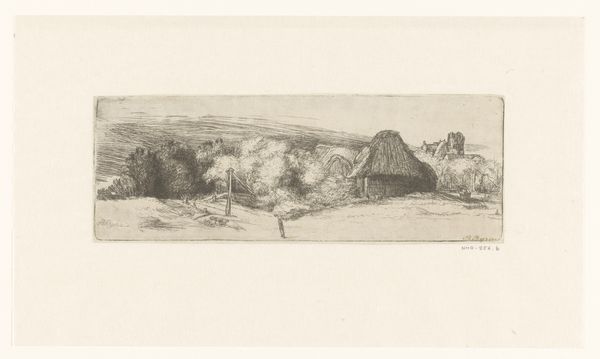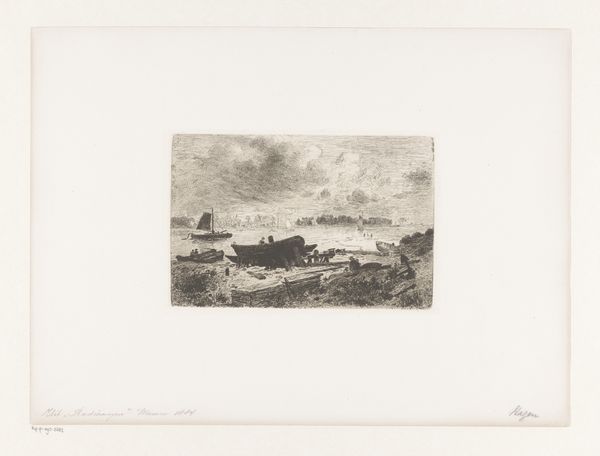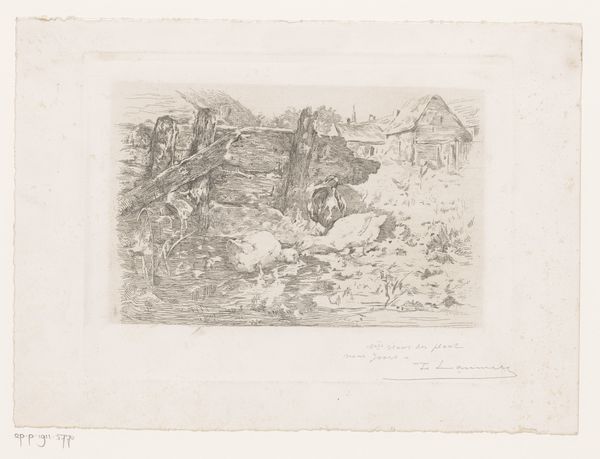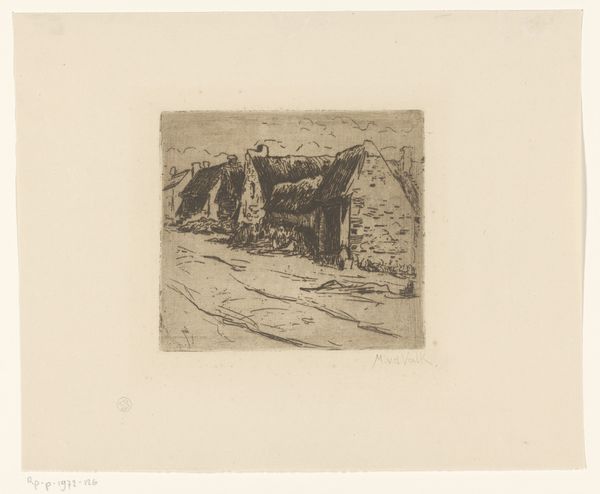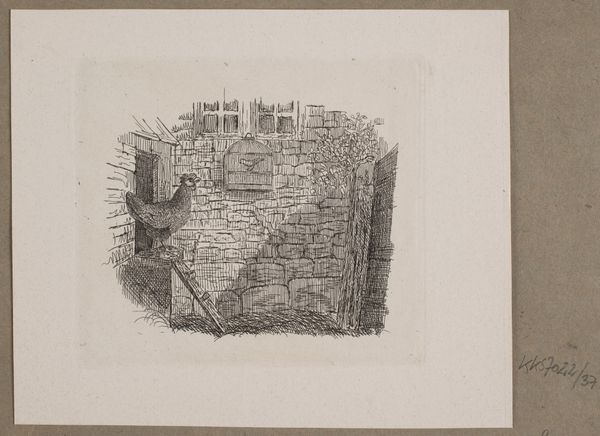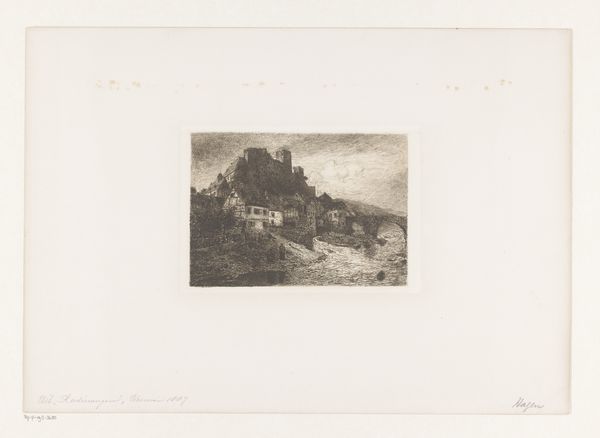
Dimensions: height 140 mm, width 188 mm
Copyright: Rijks Museum: Open Domain
Editor: Here we have Alexander Schaepkens' "Ruïnes van wallen", dating from sometime between 1830 and 1899. It’s a detailed etching, and I'm immediately drawn to how the artist captured the crumbling texture of the stone. What does this etching evoke for you? Curator: What strikes me is how this seemingly straightforward landscape participates in a larger 19th-century dialogue about history and progress. Romanticism loved ruins, didn't it? Editor: Absolutely! There's a sense of nostalgia, perhaps even a moral commentary on the fleeting nature of human achievements. Curator: Exactly. The Rijksmuseum is full of pieces reflecting burgeoning national identities at that time. How does the representation of these 'ruins of walls' speak to Dutch identity of the time? Was it a warning, a celebration, or something else? Editor: Perhaps it's a bit of all three? The Dutch Golden Age was long over, so there’s this awareness of past glory but also the relentless march of time and urban development, and perhaps the need for renewal. Curator: It’s a very picturesque decay, isn't it? And the "realist" details ground the image. I would ask, is the decay celebrated or lamented? Is there beauty even in decline? I'd say that question is absolutely a relevant one for understanding 19th-century perspectives. Editor: That’s a great point. I didn’t think about the double-edged sword of progress before. Seeing this as part of this historical conversation definitely opens it up for me! Curator: Glad to help. History’s never truly dead, and I think this etching reminds us of just that.
Comments
No comments
Be the first to comment and join the conversation on the ultimate creative platform.

